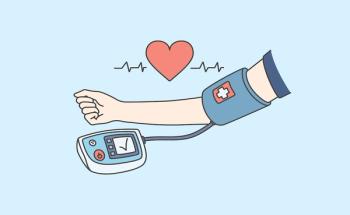
Social Support Linked to Better Quality of Life in Patients With Lupus
Patients with SLE who reported being more satisfied in their lives were more likely to have higher physical and mental component summary scores.
This article was orginally published in
Lower health-related quality of life (HRQoL) was reported in patients with systemic lupus erythematosus (SLE) who felt feelings of hopelessness or helplessness, as well as those with parental burdens. However, social support, including self-support groups, daycare services, and information support, were shown to contribute to higher HRQoL, according to a study published in BMC Rheumatology.1
“Many studies in high-income countries have focused on their HRQoL,” wrote Akira Shibanuma, PhD, Department of Community and Global Health, Graduate School of Medicine, The University of Tokyo, Bunkyo-ku, Tokyo, Japan, and colleagues. “However, evidence of awareness of SLE and HRQoL in low- and middle-income countries is lacking. Therefore, this study aimed to identify the determinants of HRQoL of SLE patients in Vietnam, a lower-middle income country.”
Investigators emphasized patients with SLE often experience invisible symptoms, such as pain and fatigue, in addition to physical and mental symptoms, such as depression, hair loss, and fever. While these symptoms are not normally associated with high mortality rates, they do have a significant impact on the lives of patients. The uncertainty of treatments can lead to anxiety, visible symptoms can result in lowered self-esteem, and invisible symptoms can create misunderstandings and a lack of support from family and friends.2 Therefore, support and understanding is extremely crucial for this patient population.
The cross-sectional study was performed at the National Hospital of Dermatology and Venereology, in Vietnam, in 2019 using a structured questionnaire. The survey consisted of the Multidimensional Scale of Perceived Social Support, Mental Adjustment to SLE, Satisfaction with Life Scale, and the physical and mental component summaries of the Short Form-36 (SF-36). Other information, such as age, gender, marital status, occupation, number of children, education, income, and drinking and smoking habits were also collected. Determinants of HRQoL were identified via multiple linear regression.
A total of 134 adult patients with SLE completed the survey. Most participants were women (94%, n = 126), the mean age was 37.9 years, and most (77.6%, n = 104) were married.
Older patients were at a greater risk of exhibiting a lower mental component summary score (B = -.45, 95% confidence interval [CI] -.73, -.17). Patients with more children tended to have a lower physical component summary score (B = -5.14, 95% CI -9.27, -1.00).
Patients with SLE who felt more hopeless or helpless were more likely to have lower scores of both the physical and mental component summaries (B = -1.85, 95% CI -2.80, -.90; B = -1.69, 95% CI -2.57, -.81). A lower mental component summary score was also observed in patients with more anxiety (B = -1.04, 95% CI -1.77, -.32).
Conversely, patients who reported being more satisfied in their lives were more likely to have higher physical and mental component summary scores (B = 1.07, 95% CI .50, 1.64; B = 1.08, 95% CI .55, 1.61).
Investigators noted results may not be generalizable to the entire SLE patient population in Vietnam as it was conducted in a hospital setting. Further, a desirability bias could have potentially altered the results of the self-administered survey. As investigators excluded patients with mental disorders, findings may not be reflective of that patient population. Lastly, disease activity, comorbidities, disease duration, and disease severity were not analyzed.
“Continuous support can improve the HRQoL of patients with SLE, such as information support to enhance the self-management skills of SLE patients, and family support to alleviate the feeling of helplessness or hopelessness,” investigators concluded. “When resources are limited, self-support groups can provide SLE patients with a safe space to share their anxiety and experiences.”
References
- Mizukami A, Trinh MT, Hoang TP, Shibanuma A, Ong KIC, Jimba M. Determinants of health-related quality of life among patients with systemic lupus erythematosus in Hanoi, Vietnam. BMC Rheumatol. 2023;7(1):16. Published 2023 Jun 22. doi:10.1186/s41927-023-00339-6
- Gallop K, Nixon A, Swinburn P, Sterling KL, Naegeli AN, Silk ME. Development of a conceptual model of health-related quality of life for systemic lupus erythematosus from the patient’s perspective. Lupus. 2012 Aug;21(9):934–43. [Epub 2012 Mar 20]. PMID: 22433917.
Newsletter
Stay ahead of policy, cost, and value—subscribe to AJMC for expert insights at the intersection of clinical care and health economics.








